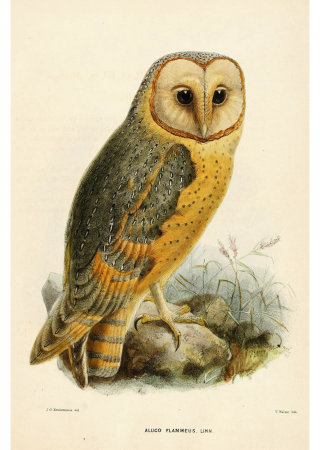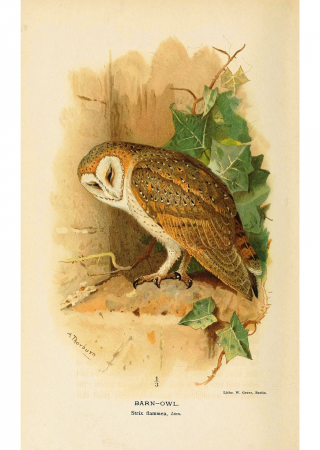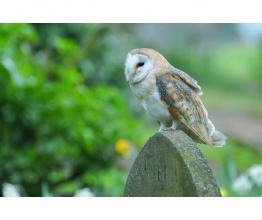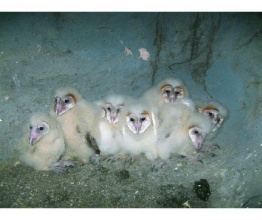Barn Owl
- …owls (Strigiformes) are not related to other Birds of Prey (class Falconiformes)?
- …almost all owls are far-sighted, and items close by are nearly invisible to them?
- …barn owls have a field of view of around 160°, and must turn their heads if they want to see to the side?
- …owls have special neck vertebrae, which allow them to turn their heads up to 270°?
- …thanks to a large number of light-sensitive cells on their retinas, owls can see in almost complete darkness?
- …like other owls, barn owls eat their prey with bones and fur, but later regurgitate these parts?
Barn owls are a beautifully colored, medium-sized species of owl. They fly silently, in a rocking flight path, usually close to the ground. In the wild, they occupy cliffs or tree hollows; near human habitations, they occupy towers, barns and attics. Barn owls have excellent hearing and vision (for distance). They eat various small mammals like mice and shrews, and even small birds. They generate squeaking tones, which can easily startle a person who is not familiar with their sound. Like other owls, barn owls do not build nests, and lay their eggs on whatever surface is handy. There are normally four to six; the young hatch after around a month. Another two months and they are ready to fly, but are not yet fully independent. Long and cold winters mean a significant decline in their numbers. Barn owls can live up to twenty years.




